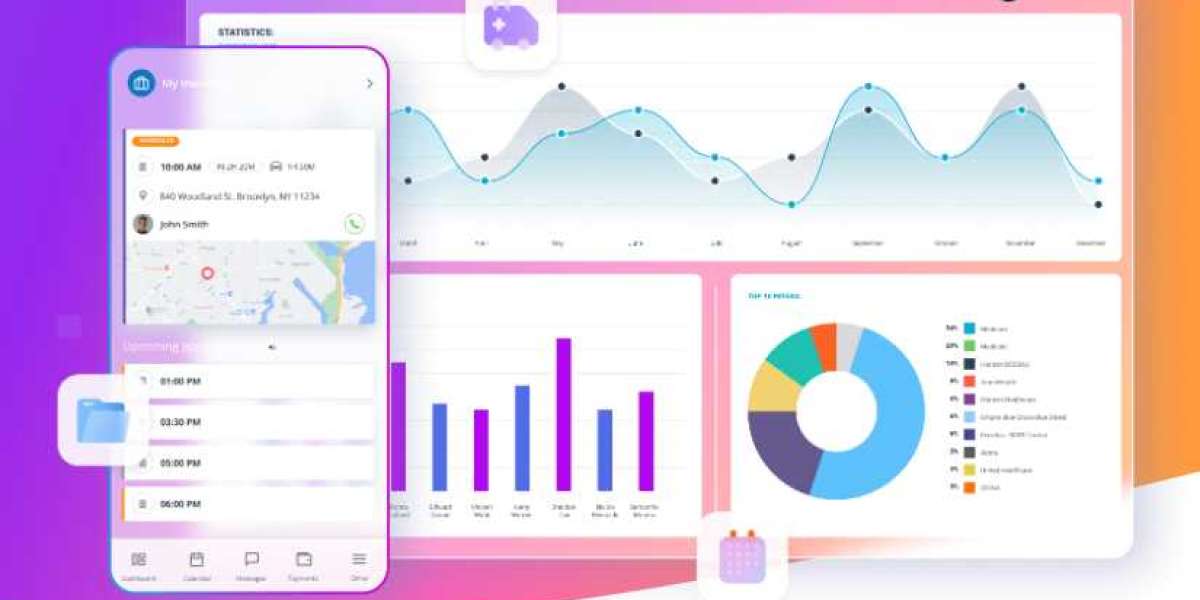The seamless operation of this software ensures that equipment is in optimal working condition, thus supporting high-quality patient care. However, the effectiveness of such software largely hinges on how well users are trained and supported. Proper user training and ongoing support are essential for maximizing the software’s potential, ensuring compliance, and ultimately, achieving success in medical equipment management. This comprehensive guide explores strategies for user training and support to ensure successful implementation and utilization of medical equipment management software.
1. Introduction to Medical Equipment Management Software
Medical equipment management software assists healthcare facilities in managing their inventory of medical devices. This includes tracking equipment usage, scheduling maintenance, ensuring compliance with regulatory standards, and managing repairs. The software helps in streamlining operations, reducing downtime, and extending the lifecycle of equipment. Despite its benefits, the software’s effectiveness is significantly impacted by how well users understand and utilize it.
2. The Importance of User Training
User training is critical in ensuring that healthcare staff can effectively use medical equipment management software. Well-trained users can leverage the software’s full capabilities, which includes:
- Efficient Use of Features: Proper training helps users understand and utilize all the features of the software, from basic functions to advanced reporting capabilities.
- Reduced Errors: Training reduces the likelihood of user errors, which can lead to incorrect data entry, missed maintenance schedules, or improper equipment management.
- Improved Productivity: With adequate training, users can navigate the software quickly, leading to improved efficiency and productivity in managing medical equipment.
- Enhanced Compliance: Trained users are better equipped to adhere to regulatory requirements and organizational policies, reducing the risk of compliance issues.
3. Developing a Comprehensive Training Program
A well-rounded training program should address various aspects of medical equipment management software. Here’s a step-by-step approach to developing a comprehensive training program:
3.1. Identify Training Needs
- Assess User Roles: Determine the specific needs of different user roles, such as equipment managers, technicians, and administrative staff. Each role may require different training modules.
- Evaluate Current Skills: Assess the current skill levels of users to tailor the training program to their needs.
3.2. Create Training Materials
- User Manuals and Guides: Develop detailed user manuals and guides that cover all aspects of the software.
- Video Tutorials: Create video tutorials that demonstrate key functions and workflows. These can be particularly useful for visual learners.
- Interactive Modules: Use interactive training modules and simulations to allow users to practice using the software in a controlled environment.
3.3. Implement Training Sessions
- Onboarding Training: Provide comprehensive training for new users as part of their onboarding process.
- Refresher Courses: Offer periodic refresher courses to keep users updated on new features and best practices.
- Hands-On Training: Conduct hands-on training sessions where users can practice using the software in real-world scenarios.
3.4. Evaluate Training Effectiveness
- Feedback Surveys: Collect feedback from users to evaluate the effectiveness of the training program and identify areas for improvement.
- Performance Metrics: Monitor performance metrics such as error rates and system utilization to assess the impact of training on software usage.
4. Ongoing Support for Users
Ongoing support is crucial for maintaining the effectiveness of medical equipment management software. Support should be readily available to address user issues and provide assistance as needed.
4.1. Establish a Support System
- Help Desk: Set up a help desk or support center where users can report issues and seek assistance.
- Online Support: Provide online support options, such as live chat or email support, for users who may need quick answers to their questions.
- Knowledge Base: Create a knowledge base with FAQs, troubleshooting guides, and other resources to help users resolve common issues on their own.
4.2. Provide Regular Updates and Communication
- Software Updates: Keep users informed about software updates, including new features, bug fixes, and security patches.
- Change Management: Communicate any changes to workflows or processes that may affect users and provide guidance on adapting to these changes.
4.3. Offer Advanced Support Options
- Training for Support Staff: Ensure that support staff are well-trained and knowledgeable about the software to provide effective assistance.
- Escalation Procedures: Implement clear escalation procedures for handling complex issues that require higher-level expertise.
5. Measuring Success and Continuous Improvement
To ensure ongoing success with medical equipment management software, it’s essential to measure the effectiveness of training and support efforts and continuously improve them.
5.1. Monitor User Performance
- Utilization Rates: Track how frequently users access and utilize various features of the software.
- Error Tracking: Monitor error rates and issue resolution times to gauge the effectiveness of training and support.
5.2. Gather User Feedback
- Surveys and Interviews: Regularly survey users and conduct interviews to gather feedback on their experiences with the software and the training and support they receive.
- Focus Groups: Organize focus groups to discuss common challenges and areas for improvement.
5.3. Implement Improvements
- Update Training Materials: Based on user feedback and performance metrics, update training materials and support resources to address identified gaps.
- Enhance Support Services: Continuously improve support services by incorporating user feedback and staying updated on best practices in support.
6. Case Studies and Examples
6.1. Successful Implementation at ABC Hospital
ABC Hospital implemented a new medical equipment management software system with a comprehensive training and support program. They provided tailored training for different user roles, including hands-on sessions and interactive modules. Post-implementation support included a dedicated help desk and regular updates. As a result, the hospital saw a significant reduction in equipment downtime and improved compliance with maintenance schedules.
6.2. Lessons Learned from XYZ Clinic
XYZ Clinic faced challenges with user adoption of their medical equipment management software due to insufficient training. By revising their training program to include more interactive and role-specific content, and by establishing a robust support system, they were able to overcome initial resistance and improve user satisfaction and software effectiveness.
7. Conclusion
User training and support are fundamental components of successfully implementing and utilizing medical equipment management software. By investing in comprehensive training programs and providing ongoing support, healthcare organizations can ensure that their staff are well-equipped to maximize the benefits of the software. This leads to improved equipment management, enhanced compliance, and better patient care. As technology continues to evolve, maintaining a focus on user training and support will be crucial for adapting to new developments and achieving continued success in medical equipment management.
Effective user training and support not only help in leveraging the full potential of medical equipment management software but also contribute to the overall efficiency and success of healthcare operations. By prioritizing these aspects, organizations can ensure that their investment in software translates into tangible benefits for both their staff and patients.








